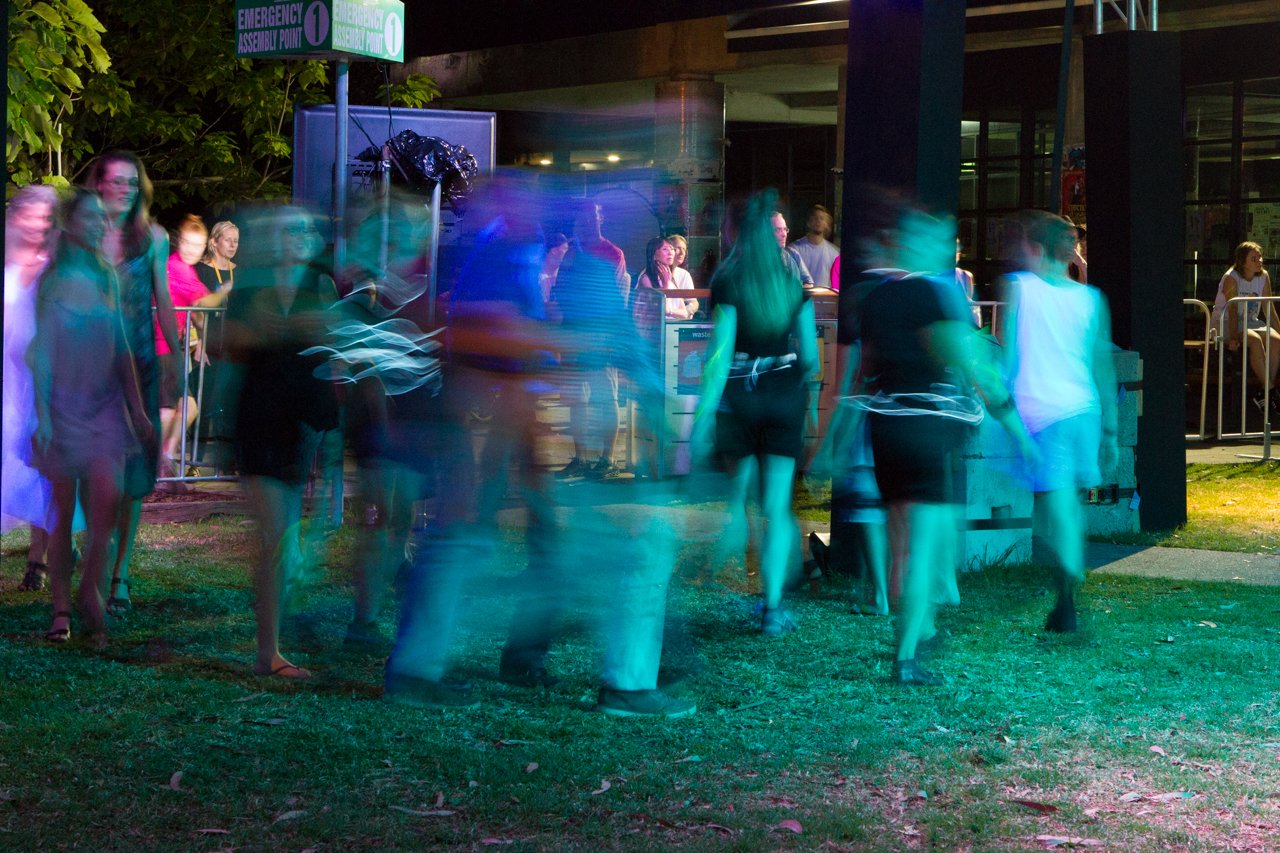Measuring public interaction to transform spaces into dynamic, collaborative engagement hubs
Client
City of Melbourne, University of Melbourne
Timeframe
December 2014 - February 2015
Role
Researcher
Engagement
1,000+ engagements over 4 nights, 125 qualitative interviews




Objective
To understand how interactive installations and their context attract and sustain audience involvement and engagement.
Methodology
To uncover what draws people in and keeps them engaged, we designed and deployed Encounters, a public installation running as part of Melbourne's White Night in 2015, inviting participants to interact through gestures and movement. Here's how we brought it to life:
Phase 1. We built a large sensor-equipped interactive space featuring LED screens, dynamic lighting, and audio, all responding to participants' movements. A choreography was designed to enable individual interaction by participants, group interaction, and guided interaction with support from professional dancers. The setup encouraged exploration, turning bystanders into active participants.
Phase 2. The installation was placed at the Victorian College of the Arts, allowing us to observe natural audience interactions. By tracking movement patterns, participation roles, and engagement trajectories, we captured how people moved from curious observers to fully immersed participants. During White Night, over 1,100 people participated in Encounters, with each interaction being tracked to document their behaviours and actions.
Phase 3. Using real-time sensor data, field observations, and interview data, we mapped the "honeypot" effect—how the presence of engaged participants influenced others to join, creating a cycle of sustained interaction.

Outcome
We know that interactive installations hinge on audience engagement. But sometimes that doesn't happen, or it happens in unexpected ways. Encounters adds to the body of knowledge around the "honeypot" effect. While previously honeypots were only a mere observation, Encounters comprehensively mapped audience trajectories and behaviours to uncover patterns that help designers understand the subtle interplay of triggers, roles, and social influences in public spaces.
The insights from Encounters go way beyond this single project. Our learnings and Honeypot Model offer a playbook for anyone designing interactive installations, showing how to document, measure, and improve audience engagement.
By understanding what sparks curiosity and sustains interaction, designers can predict and enhance how people interact, making those installations more engaging and impactful. Ultimately, this lets designers create experiences that feel more natural, compelling, and meaningful for the people using them.


